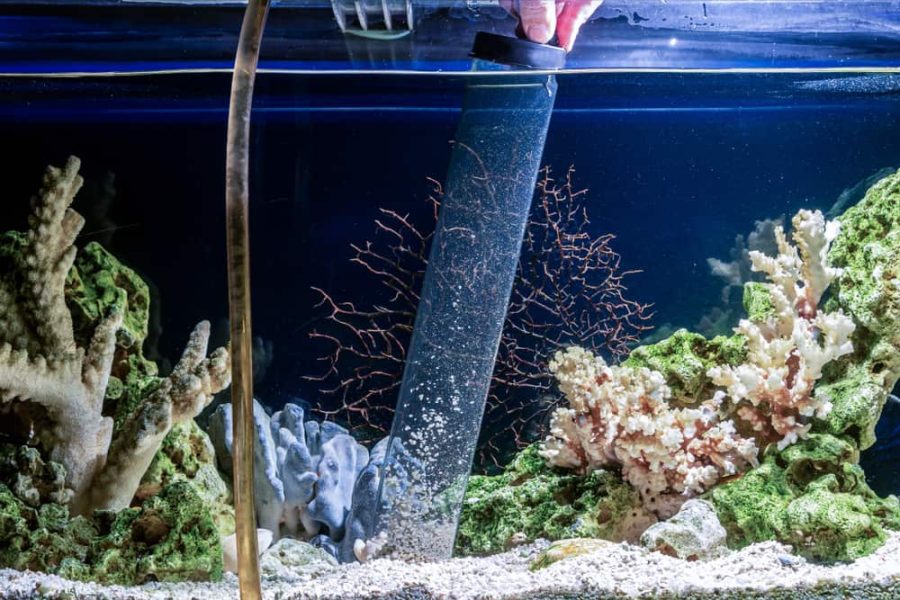
“What’s the deal with goldfish and their tanks?” You may ask, dispelling the first big myth that goldfish are fine without one. “And why bother with decorative gravel?” This is another misconception we will debunk.
Dive deep as we unmask the clandestine world of substrates. Not just aesthetic eye candies, they serve critical roles in your pets’ ecosystem. Join us as we sift through this intriguing landscape much loved by your goldfish.
Misconceptions About Goldfish Tanks
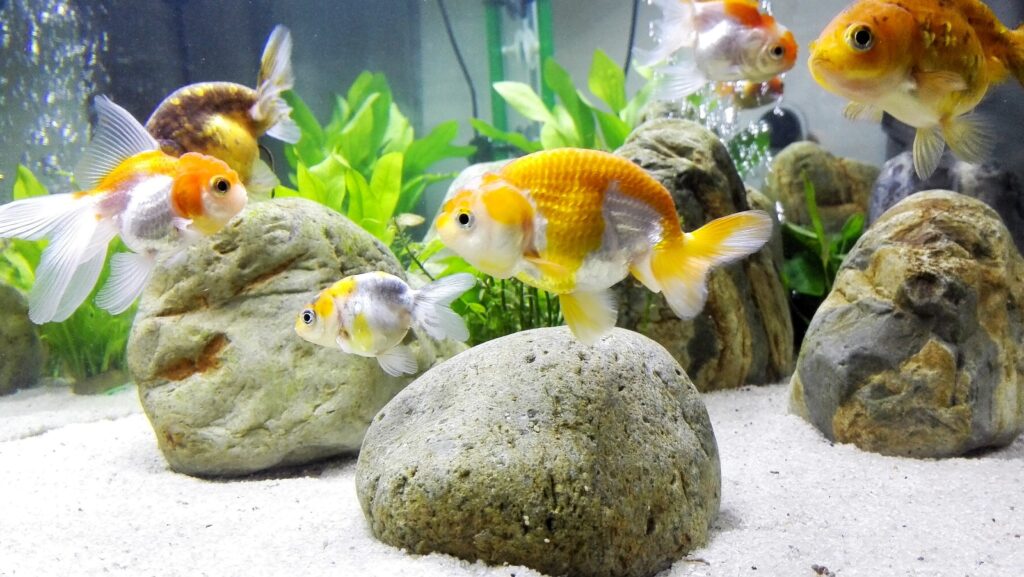
Let’s have a heart-to-heart on what might be the biggest myths in the goldfish-keeping world. A good conversation starter at parties, I promise!
Goldfish Don’t Need Tanks
Spoiler Alert! Goldfish do need tanks! This long-standing myth probably emerged from those cute goldfish-in-a-bowl images. However, it couldn’t be further from the truth. Your finned-friends deserve a spacious, healthy environment that closely emulates their natural habitat. In fact, if you’re keen on setting up the best environment for your goldfish, consider reading about The Right Tank Size for Your Goldfish and checking out the 10 Best Goldfish Tanks on the Market. So remember, a goldfish in a bowl is as unhappy as an Instagram influencer without Wi-Fi.
Substrates Are Just For Decoration
“No, Substrates are not the Kardashians of the aquatic world!” – they are way more than just pretty to look at. Many believe that these colorful granules are only there to up your tank’s aesthetic game. But hang on! They play a more crucial role, which we’ll dive into next.
Now that we’ve broken the ice and debunked some common misconceptions, let’s dive a bit deeper (pun intended). Stick around to understand what the heck substrates are.
Substrates in Goldfish Tanks
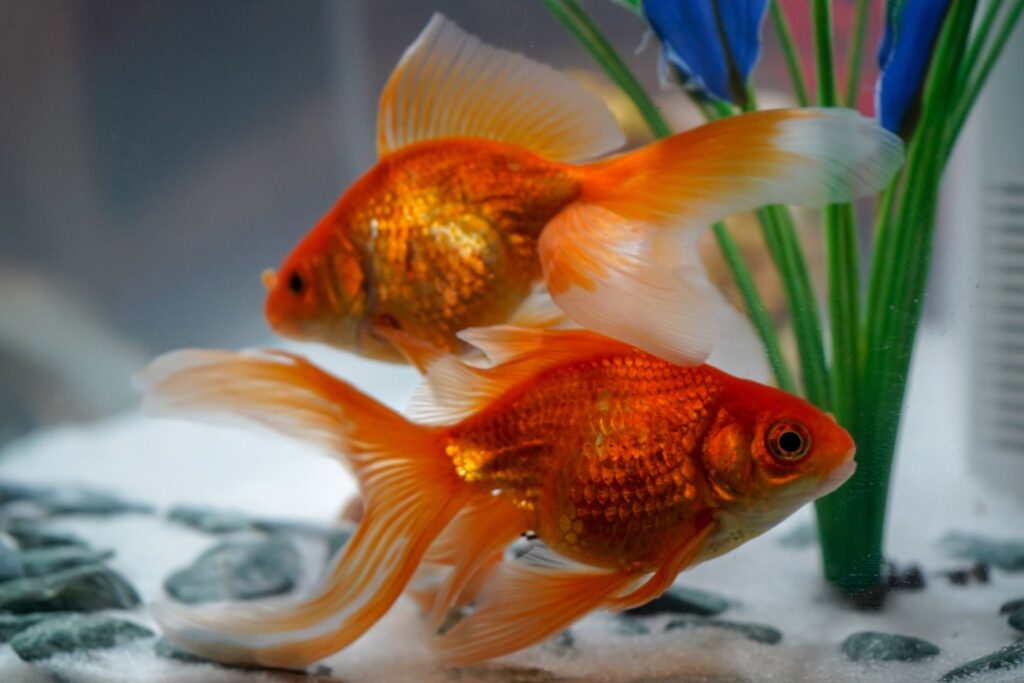
Before we dive headfirst into the fish tank and muck through the specifics, let’s lay the groundwork. We can’t have you thinking substrates are some new-fangled diet meal plan. So, put down those meal prep containers and let’s take a plunge.
What Are Substrates?
In the simplest of terms, substrates are the stuff found at the bottom of your goldfish’s tank. Y’know, the seemingly random bits of gravel, sand, or all those marbles your Aunt Gertrude insisted would look cute. Contrary to popular belief, they serve more purpose than just jazzing up the tank’s aesthetic. That’s right, much like your Aunt Gertrude’s ‘bootiful’ collection of garden gnomes, they are both ornamental and functional.
Different Kinds of Substrates
Not all substrates are winners, folks, and choosing the wrong one can feel like ordering a pizza with pineapple – a divisive choice (and no, we won’t be taking a side on the pineapple pizza debate today). From gravel to sand, to marbles (we told Aunt Gertrude, the fish can’t play with them, but she still insists), each has its perks and drawbacks. The choice does matter, and it goes beyond considering whether your fish prefer their ground more ‘rustic country chic’ or ‘modern minimalist.’
So, ready to dive deeper into the tank? In the next section, we’ll explore the benefits of different substrates for your goldfish. If you want a quick guide to some of the best options out there, don’t miss 5 Best Substrates for Goldfish Tanks of All Sizes. Strap on your imaginary goggles and take a deep breath; you’ll be surprised what you can learn from the bottom of a goldfish tank.
Why Substrates Matter in Goldfish Tanks
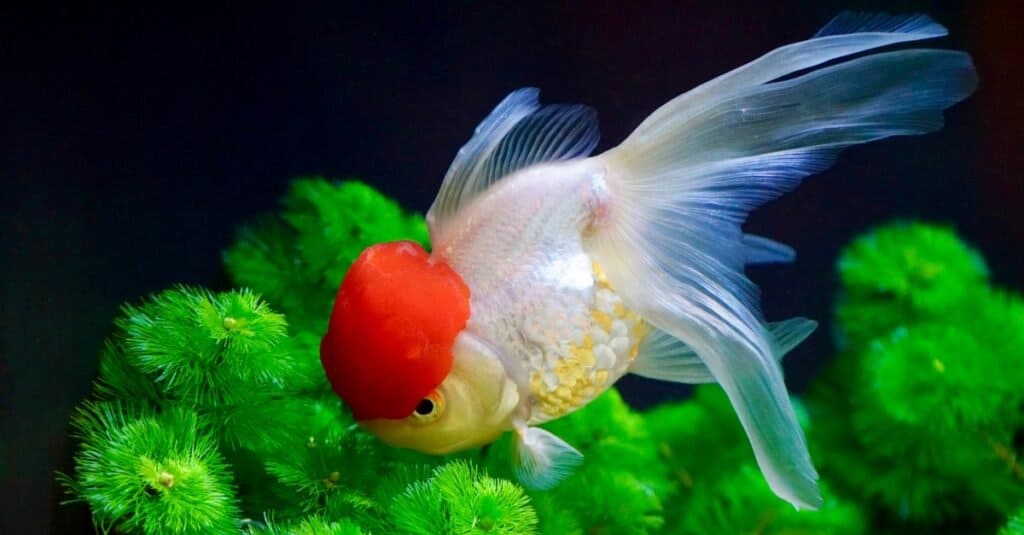
Ok, now you know what substrates are and that they’re not just about making your tank look like a snazzy underwater version of MTV Cribs. But why exactly are they important for your goldfish tank? Let’s dive right in, shall we?
The Science Part: Substrates and Water Chemistry
First off, a fun atomic fact. Substrates can affect your tank’s water chemistry. Say what? You heard that right. Some substrates, especially the calcium-based ones, have the ability to harden and alkalize your water. This might sound like some dorky chemistry lecture, but trust me, your goldfish appreciate it. Hard water is basically health spa-level treatment for your fishy friends. So before you go scoffing about water chemistry, just remember it’s all part of keeping your goldfish glowing with health.
Transitioning our tanks into an underwater wonderland wouldn’t be complete without considering these bacterial buddies. Read on.
Home Sweet Home for Bacteria
You know what’s rad? Bacteria. Wait, come back! We’re talking about the good kind here. Beneficial bacteria to be exact, and substrates provide them an excellent home. These little helpers aid in breaking down fish waste, excess food, and other organic materials. Honestly, they’re the unsung heroes of your goldfish tank, and substrates are their humble abodes. So you’re not just decorating here, you’re also creating a bustling bacteria metropolis!
Now, for an insight into goldfish food diving. On we go.
Goldfish and Substrates
Ever watched your goldfish scooping up mouthfuls of the bottom stuff and spitting it out again? Aside from being adorably goofy, there’s a purpose behind this behavior. Goldfish love to forage. It’s instinctive. The act of sifting through the substrates keeps them mentally stimulated and physically active. Using substrates is akin to providing a 5-star restaurant where your goldfish can dine on microscopic, but oh-so-delicious, morsels.
If this has piqued your curiosity and you’re now pondering, “With all these substrate options, how do I choose?” – don’t worry. We’ve got just the guide for you. Dive into Substrates for Goldfish Tanks: What You Need to Know for a comprehensive look. Grab your snorkel, and let’s plunge into the depths of choosing the right substrate for your goldfish tank. Onward!
Choosing the Right Substrates for Goldfish Tanks
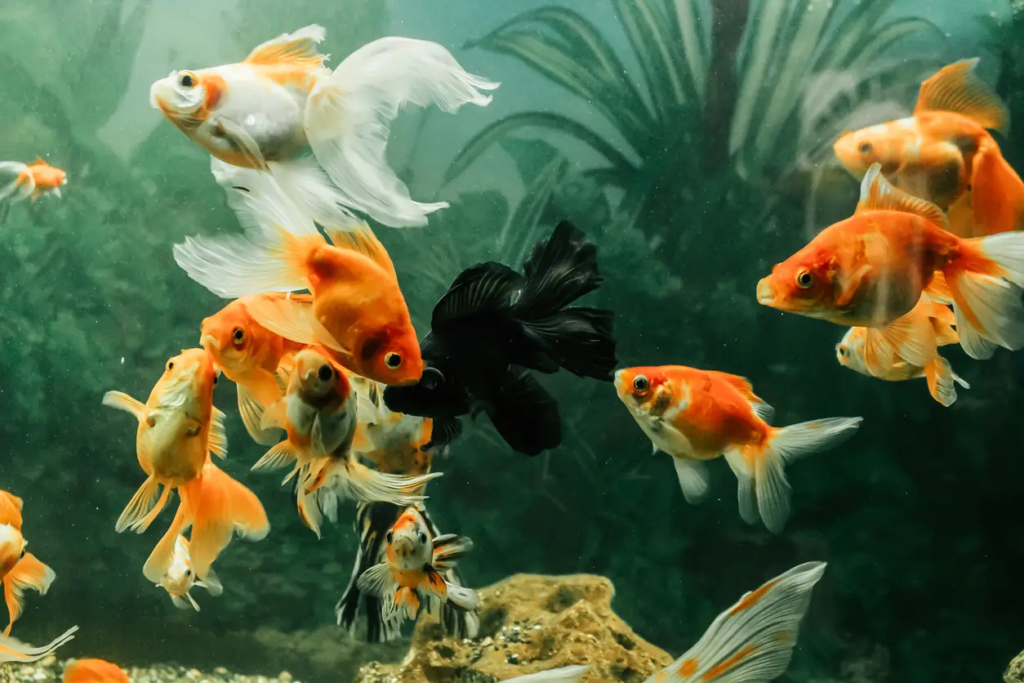
When it comes to decorating your aquatic pet’s home, it’s not just about the aesthetics. Just like on a reality TV home makeover show, functionality truly matters too.
Size Matters – Goldfish and Substrate Size
The size of your substrate is more important than the brand of your favorite pair of jeans. Too big, and goldfish can’t sift through it effectively; too tiny, and your fish might mistake it for lunch! The best option? Aim for substrate particles around 2-3 mm in diameter. This size is ideal for your goldfish to forage on, but too big to end up as an accidental snack.
With the right size in the bag (literally!) let’s bring the color into play.
Substrate Colors and Their Effects on Goldfish
Did you know your goldfish might be sensitive to colors? That’s right, it’s not just an artist thing! Just like we might feel calm in a blue room or alert in a red room, colors also impact how your finned friend feels. Darker substrates make goldfish feel secure and can promote brighter coloration.
On the bright side (no pun intended), we’re one step closer to completing our goldfish’s dream home by considering substrate material next.
Substrate Material Considerations
Now, to the main event – the material saga. In the substrate world, it’s like choosing between cotton, silk, and wool. Gravel, sand, and marbles all have their unique charms and challenges. Gravel promotes the growth of beneficial bacteria, sands offer a delightful foraging playground for fish, and marbles, though unconventional, can add a splash of pizzazz to your tank’s design.
If you’re particularly interested in sands or gravels, you might want to check out our guides on the 5 Best Sands for Goldfish Tanks and the 5 Best Gravels for Goldfish Tanks. Now you’re one step closer to being a substrate connoisseur, but hold those shopping bags! Up next, we delve into the best practices for adding and maintaining these substrates in your goldfish tank. Stay with us!
Adding and Maintaining Substrates? It’s Goldfishtastics!

Well, folks, we have journeyed through the land of goldfish substrates, and here we are, on the glittering shores of “how”. How to toss that magic dust, or pebbles, or whatever you chose as your substrate into your goldfish tank, and how to keep it disco fresh.
Popping in the Substrates – Do It Right!
Adding substrates isn’t rocket science, but it’s not just tossing gravel into a bowl either. First, rinse your chosen substrate thoroughly under running water. Chalky, dusty residues? Not a good look for your fish.
Next, create an even layer at the bottom of your tank, typically about 2 inches deep. But here’s a pro-tip for you, create a gentle slope, a little higher in the back. This gives your tank some visual depth.
Now, you’re ready to pour in the water. But hold it! Don’t just dump it in like you’re recreating Niagara Falls. Place a dish on the substrate and pour water onto the dish. This avoids displacing your carefully arranged substrate.
Cleaning Your Substrates
We gotta talk about cleaning, y’all. It’s a dirty job, but someone’s got to do it. Your goldfish aren’t gonna grab a mop, so that someone is you.
Perform partial water changes weekly. Use a gravel vacuum to clean the substrate and remove waste particles. Stick to spot-cleaning more frequently rather than deep-cleaning less often. Trust me on this, the less disruption, the happier your goldfish are.
Changing all the water at once? Not a good idea. It eliminates beneficial bacteria. And remember, we love those little critters. They keep your tank’s water chemistry under control.
Looking for more details? Dive into our Guide to Keeping Goldfish Substrates Clean and Healthy to master the craft of substrate care.
There you go, step-by-step to a well-maintained, substrate-filled goldfish tank. It’s part science, part art and a whole lot of love. And like an epic karaoke session, it might seem intimidating at first, but once you get started, you’ll wonder why you ever stressed about it. With these tips in fishy hand, you’re all set to bring your goldfish tank to life and, more importantly, keep your finned friends in blissful harmony.
Final Thought
Much contrary to popular belief, goldfish do not only need tanks, but the right type of substrates in them too. Often seen solely as a decorative item, substrates play a critical role in enclosing the water’s chemistry and providing the essential bacteria habitat.
Additionally, substrates influence the goldfish’s foraging behavior. Hence, it’s crucial to choose the correct size, color and material for your goldfish’s overall well-being. Maintaining substrates correctly by adding and cleaning them ensures a healthier environment for your goldfish. So remember folks, substrates aren’t just a “gravel” issue, they’re a golden necessity!
Frequently Asked Questions (FAQ)
Question: What are substrates in a goldfish tank?
Answer: Substrates are the material that lines the bottom of your goldfish tank. They can be sand, gravel, marbles, or other materials.
Question: Do I need substrates in my goldfish tank?
Answer: Not necessarily, but substrates can contribute positively to the water chemistry, serve as a habitat for beneficial bacteria, and support your goldfish’s natural foraging behavior.
Question: Are some substrates better for goldfish than others?
Answer: Yes, certain factors such as size, color, and material can make some substrates more suitable for goldfish than others. For instance, smaller, darker colored substrates are generally preferred.
Question: How should I add substrates to my goldfish tank?
Answer: Rinse the substrates thoroughly to remove any dust or debris, and then slowly add them to the tank, ensuring they evenly cover the bottom.
Question: How do I maintain substrates in my goldfish tank?
Answer: Regular vacuuming of the substrates during water changes helps to remove detritus and keep the environment healthy for your goldfish.

